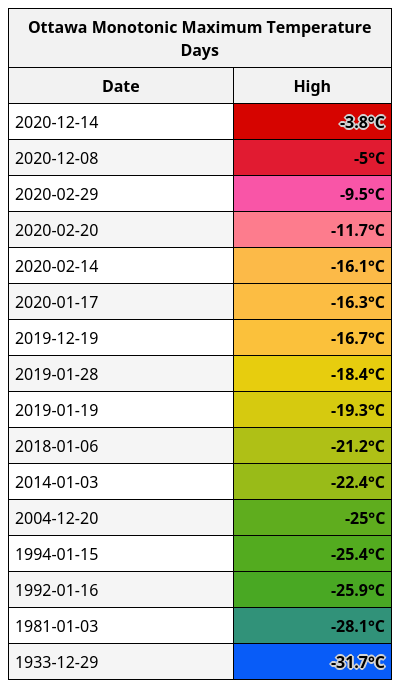
- The first word is easy, it's for the city of Ottawa.
- It ends with "Maximum Temperature Days" so each entry in the second column is the maximum temperature observed on the day listed in the first column.
- And now the complicated part "Monotonic". While the most common definition of monotonic is " speaking or uttered with an unchanging pitch or tone.", that is not the only definition. There is a second, mathematical definition: "(of a function or quantity) varying in such a way that it either never decreases or never increases.". That is the definition that I'm using here. In this case, each day listed has a maximum temperature that is lower-than-or-equal-to the day listed above, and days are listed in reverse chronological order. Days that are not lower-than-or-equal-to the day above are skipped entirely.
- Dec 14 is the first day and is thus always included.
- Dec 13, 12, 11, 10 and 9th are skipped because their daytime high was greater than -3.8°C.
- Dec 8 is included because its high temperature was ≤ (less-than-or-equal-to) -3.8°C.
- After that, almost 10 months are skipped because none of their daytime high temperatures are ≤-5°C.
- Feb 29, 2020 is included because its daytime high is ≤ -5°C.
- This continues until you get all the way down to Dec 29, 1933; which is the coldest day in Ottawa history and thus no other days are listed.
This chart is useful for answering questions like: When was the last time Ottawa had a day that stayed below -25°C? You simply look down the list until you find the first row with a value < -25°C, which happens to be Jan 15, 1994.